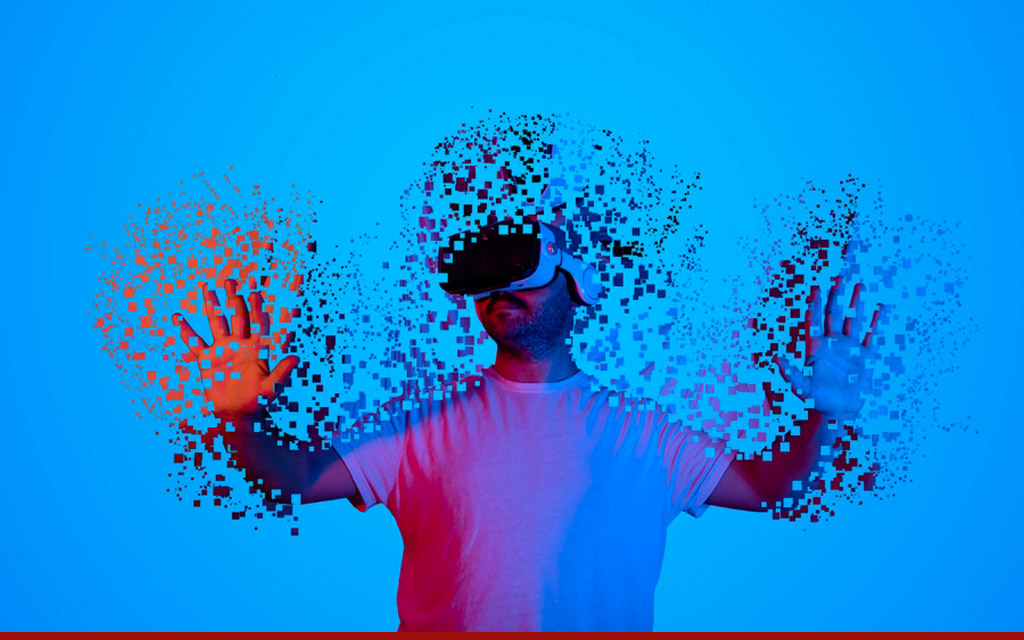Headsets, AR, VR and XR become the rage again.
Remember reading about the days when they thought the world was flat? (No, that Columbus thing is a myth.) Last week I spent a few days at the Augmented World Expo where the geekiest folks in this reality unapologetically rallied for the next reality, where the Internet is no longer flat, but a real live immersive 3D experience. Not an easy lift.

Each year the stalwarts gather, pushing ahead on the building blocks of VR, AR, and combined XR realities so that we can all move more of our daily lives: shopping, education, governments and cities, manufacturing and building, healthcare, entertainment and more into new digital experiences.
The show is ten years old and as delightfully geeky as ever. But this year two things stood out. One is that there has been real progress in creating 3D interfaces that don’t need headsets to be experienced. The second is that a new generation of headsets, hoping their time has finally arrived, are coming to market. To headset or not to headset? That is the question.
No Need for Headsets?
Browser based (i.e. no headsets) immersive experiences are getting better. These experiences are designed to give folks with nothing but a desktop, tablet, or phone a chance to meet in the same worlds as their glasses-wearing friends. Current browsers like Chrome were built for a 2D Internet but standards like WebGPU and WebXR are adding the graphics layer needed to experience the metaverse unencumbered by headgear. Companies like Niantic, especially with the acquisition of browser based AR creation platform 8th Wall, believe the phone is the ultimate AR/XR device.
Leslie Shannon, Head of Internet Trends and Scouting at Nokia gave a talk where she said “The majority of metaverse experiences are happening on mobile phones. Presence is more important than immersion.” And Sightful introduced what it’s calling the world’s first AR laptop. Put on your glasses, open your ten-inch laptop, and you can work on a full sized multiscreen AR environment.

Headset Mania
In the other corner of the immersive world are the headset evangelists. While Apple wasn’t anywhere to be found at the show the specter of its impending announcement about XR glasses – unveiled yesterday – hung over the crowd like sword of Damocles. Apple has been super-secretive about what’s behind the curtain other than the fact that it will sit on your face, cost $3,000 and have some amazing optics. Apple’s announcement will certainly give a jolt of life into the headset industry. Whether the acceptance of this rather pricey device as a headset for gamers, enterprise, or both remains to be seen. And so does the killer app that it needs to succeed. Some believe this will be the company’s new “iPhone moment”. Others say that Apple has failed at product launches before and this will be a repeat performance.
If $3,000 is too much to pay for to wear googles on your head, Meta announced its $500 Quest 3 this week. It’s thinner and more powerful than earlier versions. The Android-centric amongst us are watching for the Google/Samsung XR headset. Magic Leap showcased the Magic Leap 2 which allows for collaborative work in mixed reality and allows you to view the physical world with a VR overlay in a lightweight form factor. (The lines at the booth to don a pair of glasses and see for yourself were long!)
According to Ori Inbar, the co-founder of AWE and longtime champion of immersive worlds, the $38 billion XR industry is growing steadily at 30% annually. Fortune 1000 companies are donning optical headsets for everything from training to product collaboration. Already 1.2 billion users have experienced AR and XR, transforming verticals such as healthcare, entertainment, education, and gaming.” “ Putting things over our heads is weird” says Inbar. “Even umbrellas took 200 years until they became culturally accepted by British men. I think that XR will be much faster.”
Neil Trevett, President of the Metaverse Standards Organization (MSO), has been working with 1,500 stakeholder companies to “tame the beast” and apply rigorous open standards to the creation of immersive worlds. The group upvoted which topics to tackle. “Topping the list,” he says, “are interoperability, avatar creation, mapping formats, 3D object formats, and a big emphasis on privacy and security.” Trevett believes that closed/proprietary systems like Apple’s offer healthy competition to the open systems that MSO is fostering.”
In the midst of AI mania, the headset/virtual worlds debate took a backseat in media coverage. In the coming weeks the headsets will be returning in full force to fight for their rightful place atop your nose.
Update: On June 5th Apple announced its much awaited Vision Pro, a $3,500 headset. Built into the ski-goggle looking device there are 12 cameras, 5 sensors, and 6 mics, explaining the price. The big idea is that you can experience a wide variety of XR experiences, including creating a larger than life desktop of apps, playing ultra high resolution games and experiencing a pass through experience where you see the physical world while interacting with the virtual one. You can control the system with your eyes, voice, and hand flicks, and the UI lives in your space. Tim Cook called it Apple’s first product that you can look through, not at.

Source: https://techonomy.com/xr-is-having-a-moment-will-headsets-share-the-spotlight/




